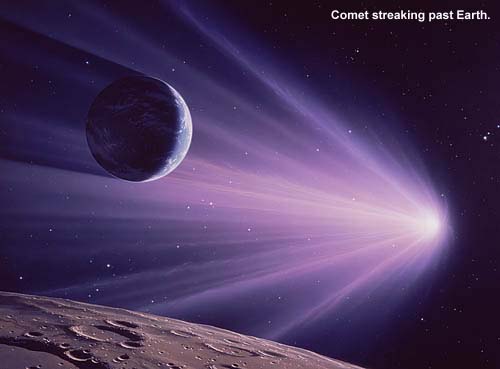

| Visitors Now: | |
| Total Visits: | |
| Total Stories: |

| Story Views | |
| Now: | |
| Last Hour: | |
| Last 24 Hours: | |
| Total: | |
Comet ISON Towards Mars in an Average Speed of Roughly 2.50 Million km per day
Thursday, September 5, 2013 4:17
% of readers think this story is Fact. Add your two cents.
ISON’s average speed throughout September will be 67,957mph. It will continue to accelerate steadily until 28th November when it’ll whip around our Sun at an astonishing 425,000mph!
Comet ISON is roughly heading towards the centre of our Solar System. It will pass within 1.2 million miles of the Sun’s surface on 28th November when it reaches perihelion (the point when its at its closest to the Sun) before being whipped around to head back ‘roughly’ in the direction it came.
As ISON makes its outbound journey, it will pass over the northern hemisphere of Earth at a distance of around 40,000,000 miles on 26th December.
Watch the video: Comet ISON Towards Mars in an Average Speed of Roughly 2.50 Million km per day

If ISON lives up to the hype, you could expect to see the Comet with the unaided eye anywhere between the middle of November until the middle of January 2014 (depending where you are on the planet).
Over the past 10 days, between August 20th and August 30th, Comet ISON traveled a distance of approximately 0.161 AU.
0.161 AU = 14,965,885 miles
0.161 AU = 24,085,257.2 kilometers
That’s an average speed of roughly 1.49 million miles per day, or 2.40 million kilometers per day.
Comet ISON’s coma, which is a cloud of gas, was approximately 3,100 miles across,
or 1.2 times the width of Australia, based on observations from NASA’s Hubble Space Telescope on April 10, 2013.
Since Comet ISON is a comet and not a planet or a moon, it has a dust tail.
On January 30, 2013, NASA’s Swift Telescope observed that Comet ISON’s dust tail extended more than 57,000 miles.
A few months later on June 13, 2013, NASA’s Spitzer Space Telescope observed that Comet ISON’s dust trail extended more than 186,400 miles (300,000 kilometers) long.

As a comparison, Comet Halley’s tail was approximately 13.67 million miles (22 million km) on February 22, 1986, thirteen days after it reached perihelion on February 9, 1986.
Comet ISON News
Read more here:
Perihelion & Distance: LIVE Information


